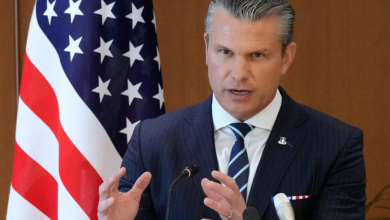Women’s Soccer in Latin America, Between Lights and Shadows
Colombian Soccer Players Participate in the Women's Copa América with the Uncertainty of Whether or not they will Play a Local Tournament in the Second Half of the Year. How is the Panorama in the Rest of Latin America?.

Photo: IG-linda__caicedo11
LatinAmerican Post | Theoscar Mogollón González
Escucha este artículo
Leer en español: Fútbol femenino en Latinoamérica, entre luces y sombras
To this day, Colombia is experiencing one of the greatest paradoxes in its soccer history. It is that although they are hosting a Women's Copa América for the first time, the party that this means is being overshadowed by the uncertainty surrounding the possibility of not having a local tournament to play in the second half of the year. What example are managers giving to the rest of Latin America?
At the start of the tournament, the Colombian soccer players made a gesture of protest prior to the match against Paraguay, raising their fists demanding that women's soccer be respected in Colombia with a lasting league and guarantees. The reason, as has been happening throughout the continent, is due to the lack of support and interest from the clubs to organize a tournament similar to the men's, alleging that they do not have the economic resources to finance their participation.
As a result of this inconvenience, the president of the Major Division of Colombian Soccer (Dimayor), Fernando Jaramillo, maintains his decision to organize a tournament in the second half of the year, as long as all the clubs agree. However, the league in question would be of shorter duration (the previous one lasted four months) and the champion would not receive any prize. All this, in turn, is due to the fact that the Women's Copa Libertadores will be held in October and Colombia already has its representatives.
For its part, it is worth mentioning that given the difficulty of organizing a women's tournament with guarantees, Dimayor expressed in a statement that they appointed four representatives to ask the Colombian Football Federation to be in charge of the logistics and implementation of the league. Certainly, it is hard to believe how Colombian women's soccer lives between lights, thanks to the Copa América, and shadows, due to the uncertainty of a championship that seems impractical.
And the rest of female soccer in Latin America?
It is no secret to anyone that female soccer is advancing on the continent, although it is still quite far from the elite. In fact, Brazil and Mexico have the most professional leagues in Latin America, whose model seeks to adhere to the one that the United States is applying. But what is different about these two countries with the rest?
With a culture rich in soccer, Brazil developed alone in the women's arena and that led it to become the world power it is today. Its soccer players not only compete in a professional league, but also enjoy having everything they need to be high-performance athletes. The clubs even have the economic power to offer them a salary of around 252 dollars, although some renowned players can earn up to USD 8,000, according to Mundo Pelota.
Next to them is Mexico, whose league continues to attract locals and foreigners. And it is that the commitment to Mexican women's soccer is being noticed, and clubs like Pachuca have made strong investments to revalue the tournament. A point to highlight this year has been the hiring of the Spanish Jenni Hermoso, from FC Barcelona, without underestimating the arrivals of the Colombians Isabella Echeverri and Natalia Gaitán or the Nigerian Uchenna Kanu.
For its part, Argentina is seeing the results of that protest four years ago that turned its players into a symbol of struggle in South American women's soccer. Currently, this tournament has 21 clubs that are already capable of guaranteeing their protagonists their expenses and clothing, in addition to a professional contract. It is worth mentioning that the salary is one of the highest in the continent with approximately $330.
As for countries like Chile and Ecuador, their respective leagues have been active since March and with the participation of 15 and 16 clubs, respectively. In turn, in Paraguay and Peru they share an almost similar championship with 13 teams, playing from February and April. Meanwhile, the women's contest in Uruguay only ended in May after starting in September 2021. All of them have in common that they meet the minimum requirements to carry out tournaments between lights and shadows.
Finally, Venezuela has been characterized by having one of the best generations of players in the last decade, despite the fact that their league has had more lows than highs. However, after the arrival of the Italian Pamela Conti to the national team, the local tournament that began in May seeks to revalue little by little with the support of fans, the press and institutions. Although the road is long, they are still up to two steps above Bolivia, whose league is not stable, its duration is very short, it lacks competitiveness and it does not have the support of clubs or the Bolivian Football Federation.





